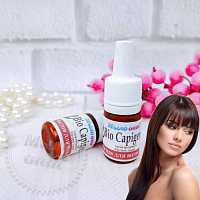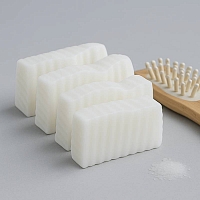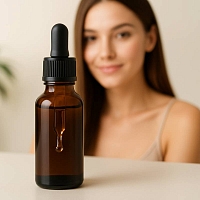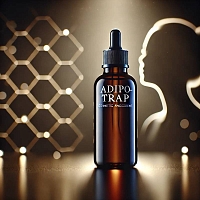-
 Absolutes
Absolutes
-
 Active Complexes
Active Complexes
-
 Actives and Peptides for Cosmetics
Actives and Peptides for Cosmetics
-
 Amino Acids
Amino Acids
-
 Food Flavorings
Food Flavorings
-
 Ayurveda
Ayurveda
-
 Vitamins
Vitamins
-
 Gelling Agents and Thickeners
Gelling Agents and Thickeners
-
 Hydrosols and Floral Waters
Hydrosols and Floral Waters
-
 Hydrolyzed Proteins
Hydrolyzed Proteins
-
 Fragrant and aromatic substances
Fragrant and aromatic substances
-
 Acids, Salts, Alcohols, and Alkalis
Acids, Salts, Alcohols, and Alkalis
-
 Preservatives and Antioxidants
Preservatives and Antioxidants
-
 Cosmetic Raw Materials
Cosmetic Raw Materials
-
 Dyes, Pearlescents, and Glitters
Dyes, Pearlescents, and Glitters
-
 Face Masks, Scrubs, and Dried Flowers
Face Masks, Scrubs, and Dried Flowers
-
 Oils, batters, macerates, oil mixtures
Oils, batters, macerates, oil mixtures
-
 Candle Supplies
Candle Supplies
-
 Melt and Pour Soap Bases
Melt and Pour Soap Bases
-
 Base for cosmetics, cream, serum, shampoo
Base for cosmetics, cream, serum, shampoo
-
 Fragrance Oils
Fragrance Oils
-
 Surfactants
Surfactants
-
 Peelings for Skin
Peelings for Skin
-
 Herbal Powders and Plant
Herbal Powders and Plant
-
 Silicones and Conditioning Surfactants for Hair
Silicones and Conditioning Surfactants for Hair
-
 Raw materials for dietary supplements
Raw materials for dietary supplements
-
 Packaging for Cosmetics and Perfumes
Packaging for Cosmetics and Perfumes
-
 Molds, Packaging, Tools
Molds, Packaging, Tools
-
 Organic Extracts
Organic Extracts
-
 Emollients for Cosmetics
Emollients for Cosmetics
-
 Emulsifiers
Emulsifiers
-
 Essential Oils
Essential Oils
Sodium Lactate 60%: The Versatile Humectant and pH Regulator for Cosmetic Formulations
Sodium Lactate 60% is a highly effective, naturally derived humectant and pH buffering agent widely utilized in the cosmetic industry. This clear, slightly viscous liquid is the sodium salt of lactic acid, produced by the fermentation of sugar. Its exceptional water-binding properties and ability to gently adjust pH levels make it an invaluable ingredient for a diverse range of skincare, haircare, and personal care products, contributing to enhanced hydration, improved skin feel, and formulation stability.
Extensive Applications in Cosmetic Formulations:
Sodium Lactate 60% offers numerous benefits and can be incorporated into a variety of cosmetic products:
- Moisturizers and Hydrating Serums: As a potent humectant, Sodium Lactate attracts and retains moisture in the skin's stratum corneum, providing long-lasting hydration and preventing dryness. It enhances the efficacy of creams, lotions, gels, and serums designed to improve skin hydration and barrier function.
- Exfoliating Products (Mild Action): While lactic acid itself is a well-known AHA (alpha-hydroxy acid), Sodium Lactate acts as a milder exfoliant at lower concentrations, helping to gently slough off dead skin cells, promoting smoother, brighter skin without significant irritation. It can be incorporated into gentle peels, masks, and cleansers.
- pH Adjusters and Buffering Agents: Sodium Lactate effectively helps to maintain the optimal pH range (typically 4.5-5.5) of cosmetic formulations, which is crucial for skin health and product stability. It can buffer against pH changes caused by other ingredients, ensuring the product remains gentle and effective.
- Soaps and Cleansers: Adding Sodium Lactate to soaps, body washes, and facial cleansers can help to counteract the drying effects of surfactants, leaving the skin feeling softer and more hydrated after cleansing.
- Haircare Products: In shampoos, conditioners, and hair masks, Sodium Lactate acts as a humectant, attracting moisture to the hair shaft, improving hydration, reducing frizz, and enhancing shine. It can also help to balance the pH of the scalp.
- Body Washes and Shower Gels: Incorporating Sodium Lactate into body washes and shower gels helps to prevent the skin from feeling stripped and dry after cleansing, contributing to a more comfortable and hydrating cleansing experience.
- Sunscreen Formulations: Sodium Lactate can contribute to the overall moisturizing effect of sunscreen products, helping to offset any potential drying effects of UV filters.
- Foot Care Products: Its humectant properties make Sodium Lactate beneficial in foot creams and treatments designed to soften dry, cracked skin and improve hydration.
- Makeup Products: In certain makeup formulations, such as tinted moisturizers or liquid foundations, Sodium Lactate can contribute to a smoother application and a more comfortable feel on the skin due to its hydrating properties.
Our online store provides worldwide shipping.
Formulation Example: Hydrating and pH-Balancing Facial Toner
| Ingredient | Phase | Percentage (%) | Notes |
|---|---|---|---|
| Water (Aqua) | A | 85.0 | Base |
| Glycerin | A | 5.0 | Humectant |
| Sodium Lactate 60% | A | 5.0 | Humectant, pH adjuster |
| Panthenol (Pro-Vitamin B5) | A | 2.0 | Moisturizing, soothing |
| Allantoin | A | 0.5 | Soothing, skin-conditioning |
| Polysorbate 20 | B | 1.0 | Solubilizer for fragrance/essential oils |
| Fragrance (Optional) | B | q.s. | To add scent |
| Phenoxyethanol, Ethylhexylglycerin | C | 1.5 | Preservative |
Instructions:
- Combine the ingredients of Phase A (water, glycerin, sodium lactate, panthenol, and allantoin) in a clean beaker and mix until all ingredients are fully dissolved.
- In a separate small beaker, combine the ingredients of Phase B (polysorbate 20 and fragrance, if used) and mix well to ensure the fragrance is fully solubilized.
- Slowly add Phase B to Phase A while stirring gently.
- Finally, add the preservative (Phase C) and mix thoroughly to ensure even distribution.
- Check and adjust the pH of the toner if necessary. The ideal pH for a facial toner is typically between 4.5 and 5.5. You can use a diluted citric acid solution to lower the pH or a diluted sodium hydroxide solution to raise it, if needed.
- Carefully transfer the finished toner into a clean bottle with a suitable dispensing mechanism (e.g., spray nozzle or flip-top cap).
Application Recommendations:
After cleansing your face, apply a small amount of the Hydrating and pH-Balancing Facial Toner onto a cotton pad or directly into your palms. Gently sweep the toner over your face and neck, avoiding the eye area. Allow the toner to air dry or gently pat it into the skin before applying your serum or moisturizer. Use morning and evening as part of your skincare routine.
And also go to the Blog from Мыло Опт, where we share useful information about creating the right natural cosmetics
| INCI | Sodium Lactate | |
| Other | ||
| Color product | transparent, cloudy | |
| Composition | C5H3O5Na | |
| Descriptio smell | characteristic | |
| Features | All information presented on the site is for reference only | |
| Input percentage | 1-3% | |
| Minimum count | 1 | |
| Name | Sodium lactate 60%, 50 g | |
| Other names | International name: Sodium Lactate | |
| Packaging | container for transport | |
| Packing | 50 gr | |
| Solubility | water | |
| View | liquid | |
| Valid until | 12.2026 | |
-
Date:todayAuthor:Екатерина, СлавянскReviews
Дякую за широкий вибір інгредієнтів для косметики! Знайшла все, що шукала, і навіть більше. Ціни приємні, а якість продуктів на висоті. Буду замовляти ще!
Date:5 DecemberAuthor:Света, Карловка









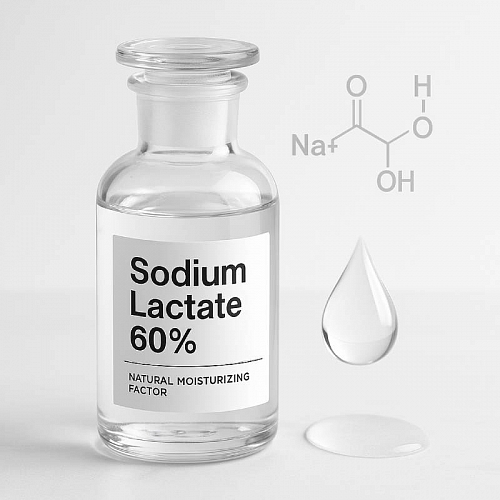
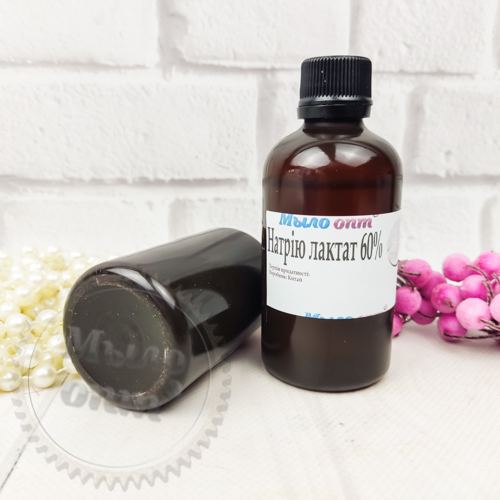
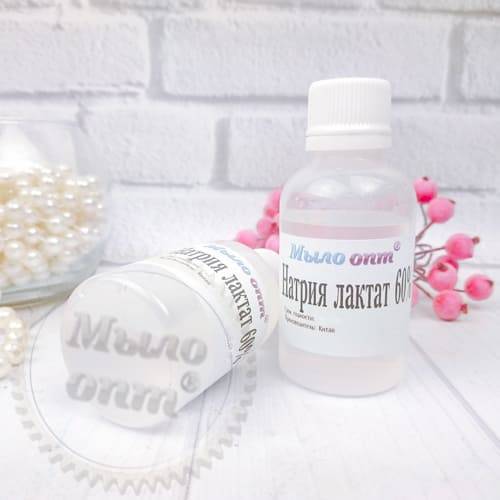



 Add to cart
Add to cart Buy in 1 click
Buy in 1 click

 Add a review
Add a review To favorites
To favorites To compare
To compare






